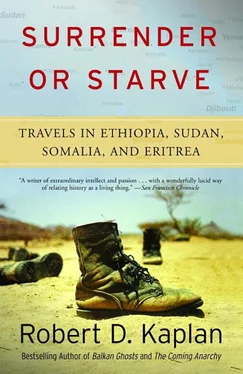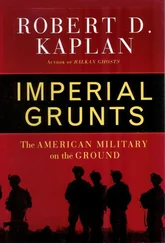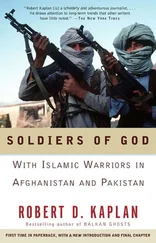Security, which consumes the Western diplomatic and aid community in the Yemeni capital of Sana’a—as well as everywhere else in the Middle East—is barely an issue in Asmara. Though the capital of a desperately poor, drought-stricken country in one of the world’s most politically volatile regions, Asmara, despite its tattered storefronts in need of a paint job, is not only among the cleanest capital cities in Africa, it may also be the safest: the only capital south of the Sahara where one can leave the car door unlocked or prowl the back streets at all hours without worry of being robbed, even as police are barely in evidence. As for political violence, whereas one Western aid administrator in Sana’a had told me of his fear of assassination, on account of his being a soft target, and whereas the ugly fortress architecture and entry procedures of the American Embassy there are a study in paranoia, American, Israeli, and other resident diplomats and aid administrators in Eritrea move freely about the country without guards or other escorts, as if they were at home.
Eritrea, a country of 3.5 million inhabitants, almost half of whom are illiterate, is a place where women run shops, restaurants, and hotels, where handicapped people have shiny new crutches and wheelchairs, and where, unlike in so many Third World countries, people drive slowly and attend driving school, where scrap metal junkyards are restricted to the urban outskirts, where receipts are given for every transaction, and where there are no electricity blackouts because of sloppy maintenance and badly managed energy resources. Foreign diplomats in Asmara praise the country’s lack of corruption coupled with its good implementation of aid projects. While rural health clinics in much of Africa have empty shelves and missing, unacounted-for supplies, in Eritrea clinic managers pull out a ledger and document where the medicine went.
An immense fish farm near the port of Massawa testifies to Eritrea’s ability to effectively utilize foreign aid and know-how. The 600-hectare complex channels salt water from the Red Sea, purifies it, then uses it to raise shrimp in scores of circular cement tanks. The high-nutrient excess of that process is for breeding tilapia, normally a freshwater fish. The remaining waste water is pumped into asparagus and mangrove fields and artificially created wetlands. Though the operation is overseen by a firm from Phoenix, Arizona, and for a time employed an Israeli consultant, the consultant is no longer needed, the Eritreans themselves modified the pump engines, and in almost every respect run the operation.
Such initiative and communal discipline is the result of a Maoist-degree of mobilization and an Albanian-like xenophobia— but without the epic scale of repression and the Marxist ideology that once characterized China and Albania. This organizational aptitude and xenophobia is, in turn, as Eritreans never cease to explain, the product of culture and historical experience much more than it is of policy choices. Eritrea never had feudal structures, sheikhs, or warlords. Villages were commonly owned, and governed through councils, or baitos, of elders. “It was not a society deferential to individual authority,” explained Yemane Ghebre Meskel, director of President Afewerki’s office, “so we didn’t need Marxist ideology to achieve a high stage of communalism.” Wolde ab Yisak, president of the University of Asmara, observed that “communal self-reliance is our dogma, which in turn comes from the knowledge that we Eritreans are different from the Ethiopians, the Arabs, and everyone else.” (On my flight out of Eritrea, I overheard a teenage Eritrean girl from the diaspora lecturing her younger siblings in American English about how the “Ethiopians murdered our people.”)
This clarified sense of nationhood, rare in a world of nation-states rent by tribalism and globalization, is in part an inheritance of Indian colonialism. “We look at colonialism more favorably than other peoples in Africa and Asia,” said Yemane Ghebread, the political affairs officer of the People’s Front for Democracy and Justice, the successor to the country’s guerrilla movement, the EPLF. Having conquered Eritrea in the late nineteenth century, by the late 1930s the Italians turned their new colony into one of the most highly industrialized places in Africa, with a road and railway network that united a people previously divided by mountains and deserts. To drive from Asmara to Massawa, a descent of 7,500 feet in only seventy miles, down the tangled vertebrae of coppery-green peaks on a road of neverending switchbacks, bridges, and embankments, built by Mussolini in 1935–1936 and maintained in excellent condition by Eritrean highway crews working seven days a week, is to experience the historical energy of the industrialized West transplanted successfully to an African people, rather than being dissipated following the departure of colonial administrators.
Another benefit of Italian colonialism, according to Ghebre Meskel, was “town planning.” Rather than concentrate everything in Asmara, the Italians developed Massawa and other towns so as to prevent the overcentralization that now plagues other Third World countries. To stem urban migration into Asmara and thus preserve this legacy, the Eritrean government has tried to improve life in rural areas: a reason why Asmara has no shantytowns surrounding it breeding political extremism.
Following the defeat of fascist Italy in World War II and the dissolution of its East African empire, the new United Nations voted to incorporate Eritrea into Ethiopia. The Eritreans, unhappy with this decision, revolted finally in 1961. For thirteen years Eritrean guerrillas fought an Ethiopia backed by the United States. In 1974, when Ethiopian Emperor Haile Selassie was over-thrown—leading to a Marxist regime headed by Mengistu Haile Mariam—Eritrean guerrilla activity did not cease, and from then on the Eritreans fought an Ethiopia backed this time by the Soviet Union. Yet despite their ability to grind away at a Soviet-supplied war machine, which featured MIG fighter jets and Soviet generals on the battlefield, the secretive and independent-minded Eritreans received no aid under the Reagan Doctrine (President Ronald Reagan’s program of arming Third World anticommunist insurgencies). Nevertheless, in 1991 Eritrean and Tigrean guerrillas, fighting on separate fronts, defeated Mengistu, with Eritrean tanks rolling triumphantly into the Ethiopian capital of Addis Ababa. Thus, in the minds of the Eritreans, they fought and won a three-decade struggle against a state ten times as populous, with no help from either of the superpowers or the rest of the outside world. They owe nothing to nobody, they emphasize repeatedly, and are filled with disdain for international opinion. A taxi driver, for example, berated me for the West’s focus on the crimes of former Yugoslav dictator Slobodan Milosevic, whereas Mengistu, who was responsible for at least twice as many deaths through his collectivization programs, lives in lavish exile in Zimbabwe.
The definitive symbol of such self-reliance, collectivity, and rudimentary survival is a monument in downtown Asmara—not of an individual, or even of a generic guerrilla fighter, but of a giant pair of sandals, shedas, in the native Tigrinya language. The rubber sandals, which the Eritreans produced themselves from recycled tire rubber, were worn by every Eritrean fighter: the ultimate necessity in a stony desert war zone. The monument to the sandals indicates how the long struggle against Ethiopia has achieved such mythic proportions in the minds of Eritreans that it has come to supercede the power of religion itself in a society split evenly between Moslems and Orthodox Christians: an impressive achievement on a continent where Islam and Christianity are increasingly the banners of antagonistic group identities.
Читать дальше












